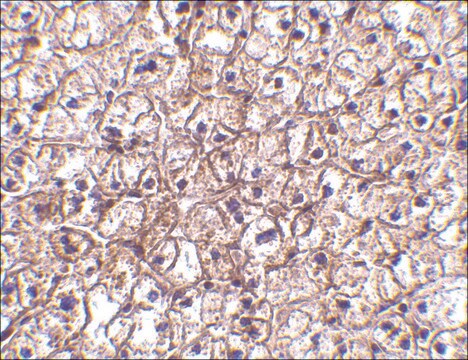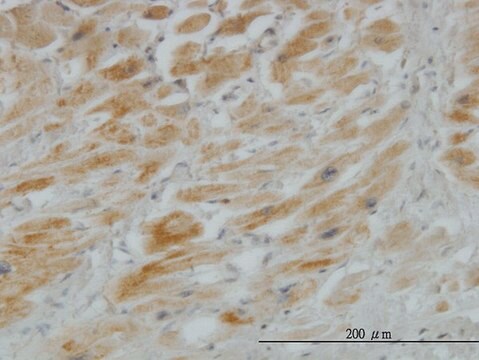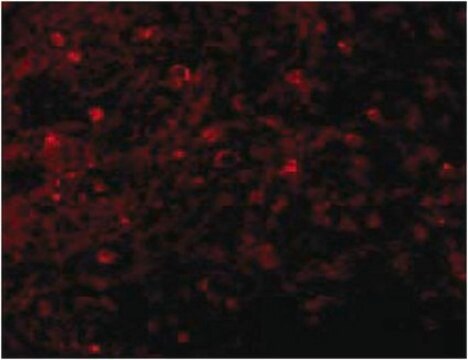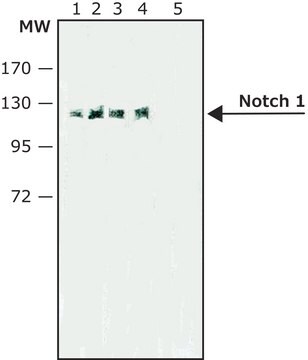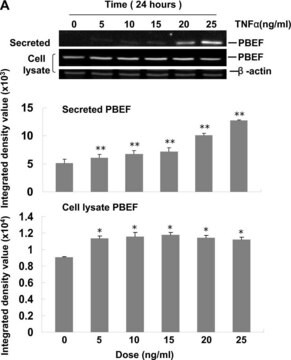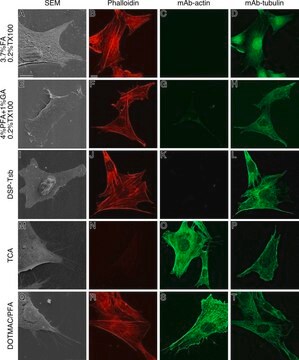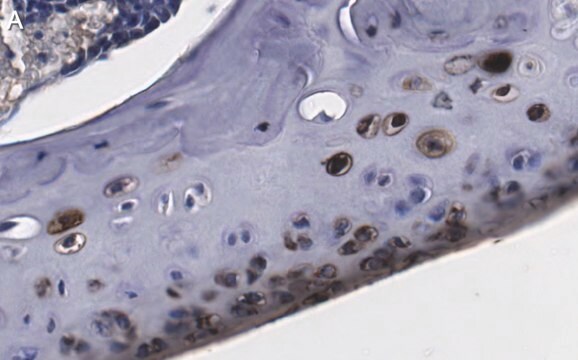Kluczowe dokumenty
SAB4200468
Anti-JAM-A antibody, Mouse monoclonal
clone J10.4, purified from hybridoma cell culture
Synonim(y):
Monoclonal Anti-CD321, Monoclonal Anti-F11 receptor, Monoclonal Anti-F11R, Monoclonal Anti-JAM, Monoclonal Anti-JAM1, Monoclonal Anti-JAMA, Monoclonal Anti-JCAM, Monoclonal Anti-KAT, Monoclonal Anti-PAM-1
About This Item
Polecane produkty
pochodzenie biologiczne
mouse
Poziom jakości
białko sprzężone
unconjugated
forma przeciwciała
purified immunoglobulin
rodzaj przeciwciała
primary antibodies
klon
J10.4, monoclonal
Formularz
buffered aqueous solution
masa cząsteczkowa
antigen 37 kDa
reaktywność gatunkowa
human
stężenie
~1.0 mg/mL
metody
immunoblotting: 1.0-2.0 μg/mL using HepG2 or A431 or A549 total cell extracts
izotyp
IgG1
numer dostępu UniProt
Warunki transportu
dry ice
temp. przechowywania
−20°C
docelowa modyfikacja potranslacyjna
unmodified
informacje o genach
human ... F11R(50848)
Opis ogólny
Specyficzność
Immunogen
Zastosowanie
- western blotting
- staining for confocal microscopy
- immunoprecipitation
- immunocytochemistry
- flow cytometry
Działania biochem./fizjol.
Postać fizyczna
Przechowywanie i stabilność
Oświadczenie o zrzeczeniu się odpowiedzialności
Nie możesz znaleźć właściwego produktu?
Wypróbuj nasz Narzędzie selektora produktów.
Kod klasy składowania
10 - Combustible liquids
Klasa zagrożenia wodnego (WGK)
WGK 2
Temperatura zapłonu (°F)
Not applicable
Temperatura zapłonu (°C)
Not applicable
Wybierz jedną z najnowszych wersji:
Certyfikaty analizy (CoA)
Nie widzisz odpowiedniej wersji?
Jeśli potrzebujesz konkretnej wersji, możesz wyszukać konkretny certyfikat według numeru partii lub serii.
Masz już ten produkt?
Dokumenty związane z niedawno zakupionymi produktami zostały zamieszczone w Bibliotece dokumentów.
Nasz zespół naukowców ma doświadczenie we wszystkich obszarach badań, w tym w naukach przyrodniczych, materiałoznawstwie, syntezie chemicznej, chromatografii, analityce i wielu innych dziedzinach.
Skontaktuj się z zespołem ds. pomocy technicznej
